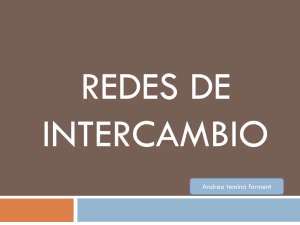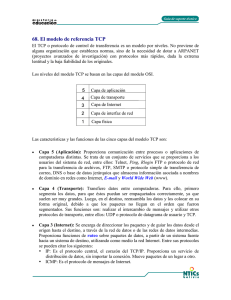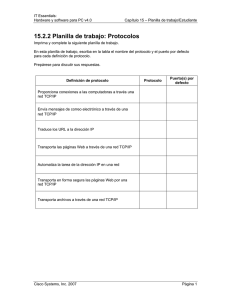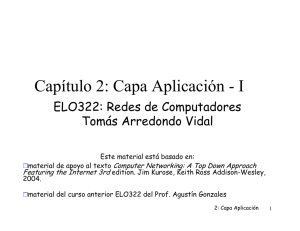Descargar Pdf
Anuncio
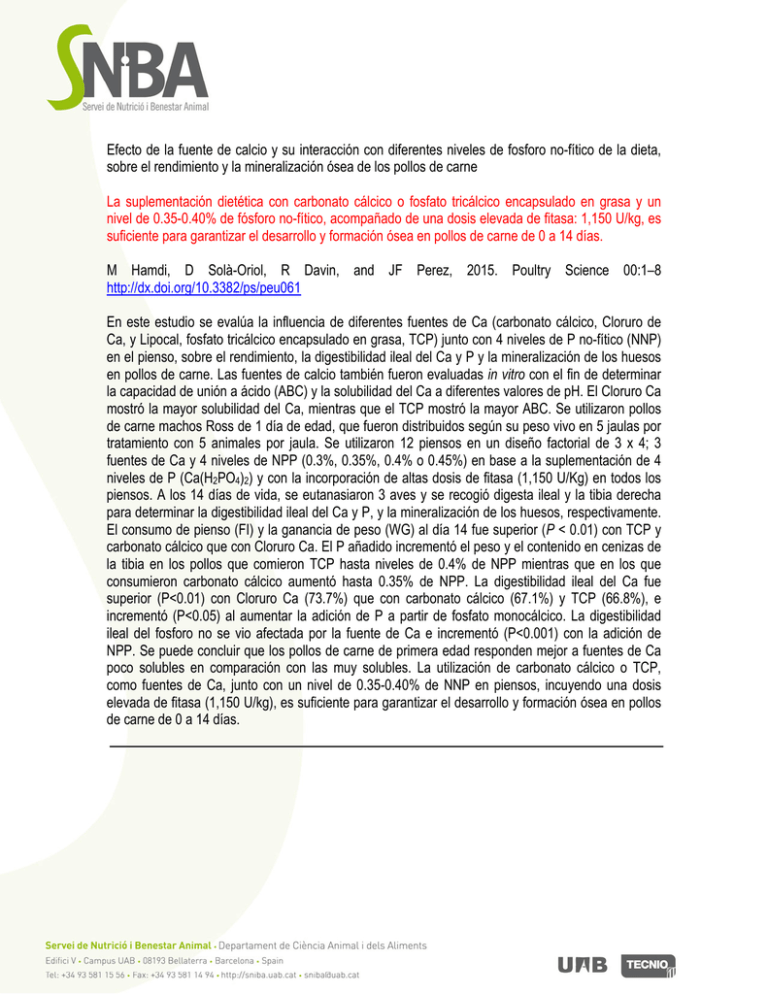
Efecto de la fuente de calcio y su interacción con diferentes niveles de fosforo no-fítico de la dieta, sobre el rendimiento y la mineralización ósea de los pollos de carne La suplementación dietética con carbonato cálcico o fosfato tricálcico encapsulado en grasa y un nivel de 0.35-0.40% de fósforo no-fítico, acompañado de una dosis elevada de fitasa: 1,150 U/kg, es suficiente para garantizar el desarrollo y formación ósea en pollos de carne de 0 a 14 días. M Hamdi, D Solà-Oriol, R Davin, and JF Perez, 2015. Poultry Science 00:1–8 http://dx.doi.org/10.3382/ps/peu061 En este estudio se evalúa la influencia de diferentes fuentes de Ca (carbonato cálcico, Cloruro de Ca, y Lipocal, fosfato tricálcico encapsulado en grasa, TCP) junto con 4 niveles de P no-fítico (NNP) en el pienso, sobre el rendimiento, la digestibilidad ileal del Ca y P y la mineralización de los huesos en pollos de carne. Las fuentes de calcio también fueron evaluadas in vitro con el fin de determinar la capacidad de unión a ácido (ABC) y la solubilidad del Ca a diferentes valores de pH. El Cloruro Ca mostró la mayor solubilidad del Ca, mientras que el TCP mostró la mayor ABC. Se utilizaron pollos de carne machos Ross de 1 día de edad, que fueron distribuidos según su peso vivo en 5 jaulas por tratamiento con 5 animales por jaula. Se utilizaron 12 piensos en un diseño factorial de 3 x 4; 3 fuentes de Ca y 4 niveles de NPP (0.3%, 0.35%, 0.4% o 0.45%) en base a la suplementación de 4 niveles de P (Ca(H2PO4)2) y con la incorporación de altas dosis de fitasa (1,150 U/Kg) en todos los piensos. A los 14 días de vida, se eutanasiaron 3 aves y se recogió digesta ileal y la tibia derecha para determinar la digestibilidad ileal del Ca y P, y la mineralización de los huesos, respectivamente. El consumo de pienso (FI) y la ganancia de peso (WG) al día 14 fue superior (P < 0.01) con TCP y carbonato cálcico que con Cloruro Ca. El P añadido incrementó el peso y el contenido en cenizas de la tibia en los pollos que comieron TCP hasta niveles de 0.4% de NPP mientras que en los que consumieron carbonato cálcico aumentó hasta 0.35% de NPP. La digestibilidad ileal del Ca fue superior (P<0.01) con Cloruro Ca (73.7%) que con carbonato cálcico (67.1%) y TCP (66.8%), e incrementó (P<0.05) al aumentar la adición de P a partir de fosfato monocálcico. La digestibilidad ileal del fosforo no se vio afectada por la fuente de Ca e incrementó (P<0.001) con la adición de NPP. Se puede concluir que los pollos de carne de primera edad responden mejor a fuentes de Ca poco solubles en comparación con las muy solubles. La utilización de carbonato cálcico o TCP, como fuentes de Ca, junto con un nivel de 0.35-0.40% de NNP en piensos, incuyendo una dosis elevada de fitasa (1,150 U/kg), es suficiente para garantizar el desarrollo y formación ósea en pollos de carne de 0 a 14 días. Calcium sources and their interaction with the different levels of non-phytate phosphorus affect performance and bone mineralization in broiler chickens A level of 0.35%–0.40% NPP with a high dose of phytase (1,150 U/kg) in diets including limestone or TCP is sufficient to guarantee performance and bone formation for broiler chickens from d 0 to d 14. M Hamdi, D Solà-Oriol, R Davin, and JF Perez, 2015. Poultry Science 00:1–8 http://dx.doi.org/10.3382/ps/peu061 An experiment was conducted to evaluate the influence of different Ca sources (limestone, Ca chloride, and Lipocal, a fat-encapsulated tricalcium phosphate, TCP) in conjunction with 4 dietary levels of non-phytate P (NPP) on performance, ileal digestibility of Ca and P, and bone mineralization in broiler chickens. Calcium sources were also evaluated in vitro to measure acid-binding capacity (ABC) and Ca solubility at different pH values. Ca chloride showed the highest solubility of Ca, with TCP showing the highest ABC. Ross male broiler-chicks were sorted by BW at 1 d post-hatch and assigned to 5 cages per diet with 5 birds per cage. Twelve diets were arranged in a 3 × 4 factorial of the 3 Ca sources and 4 levels of NPP (0.3%, 0.35%, 0.4% or 0.45%) consisting of 4 added P levels (Ca(H2PO4)2) with a high dose of phytase (1,150 U/kg) in all diets. On d 14 post-hatch, 3 birds were euthanized, and ileal digesta and the right tibia were collected to determine ileal Ca and P digestibility and bone mineralization, respectively. Feed intake (FI) and weight gain (WG) on d 14 was higher (P < 0.01) with TCP and limestone than with Ca chloride. Added P increased the tibia weight and tibia ash content in chicks fed TCP up to 0.4% NPP and limestone up to 0.35% NPP. Calcium ileal digestibility was higher (P < 0.01) with Ca chloride (73.7%) than with limestone (67.1%) or TCP (66.8%), which increased (P < 0.05) with added levels of P from monocalcium phosphate. Phosphorus ileal digestibility was not affected by the Ca source and increased (P < 0.001) with added levels of NPP. It can be concluded that starting broilers responded better to low-soluble Ca sources compared to highsoluble sources. A level of 0.35%–0.40% NPP with a high dose of phytase (1,150 U/kg) in diets including limestone or TCP is sufficient to guarantee performance and bone formation for broiler chickens from d 0 to d 14.
